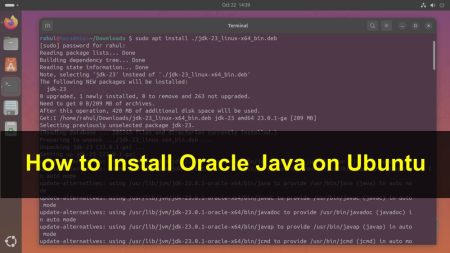JavaMail API is a powerful and flexible tool that enables Java developers to incorporate email sending capabilities into their applications. As part of Java’s extensive library, it can manage complex email systems using Simple Mail Transfer Protocol (SMTP) and other messaging protocols. This article offers a comprehensive guide to using JavaMail API with a local SMTP server for sending emails.
Understanding JavaMail API
The JavaMail API provides a platform-independent and protocol-independent framework that allows users to build mail and messaging applications. The API provides classes that model a mail system. JavaMail does not implement an email server, instead, it allows you to access an email server using a Java-based interface.
Setting Up Your Environment
Before you can use the JavaMail API, you will need to set up your development environment. This includes downloading and installing the Java Development Kit (JDK) and setting up an integrated development environment (IDE) like Eclipse or IntelliJ IDEA.
You will also need to download the javax.mail.jar file, which contains the JavaMail API. This file should be included in your project’s classpath. You can download it from the Maven Repository or directly from the Oracle website.
The Basics of Sending Emails with JavaMail API
To send an email using JavaMail API, you will generally follow these steps:
- Create a Session object: The Session class represents a mail session and is used to get a Transport object.
- Compose the Message: The Message class represents an email message. Create a new message by using the MimeMessage class, which is an implementation of the abstract Message class.
- Send the Message: This is done using the Transport object.
Here is an example of sending an email using a local SMTP server:
1 2 3 4 5 6 7 8 9 10 11 12 13 14 15 16 17 18 19 20 21 22 23 24 25 26 27 28 29 30 31 32 33 34 35 36 37 38 39 40 41 42 43 44 45 46 47 48 | import javax.mail.*; import javax.mail.internet.*; import java.util.*; public class EmailSender { public static void main(String[] args) { // Defining recipient's email ID // Defining sender's email ID // Assuming you are sending email from localhost String serverHost = "localhost"; // Fetch system properties Properties properties = System.getProperties(); // Set up mail server properties.setProperty("mail.smtp.host", serverHost); // Fetch the default Session object Session session = Session.getDefaultInstance(properties); try { // Construct a default MimeMessage object MimeMessage emailMessage = new MimeMessage(session); // Assign 'From' header field of the header emailMessage.setFrom(new InternetAddress(senderEmail)); // Assign 'To' header field of the header emailMessage.addRecipient(Message.RecipientType.TO, new InternetAddress(recipientEmail)); // Assign 'Subject' header field emailMessage.setSubject("Subject Line Here!"); // Assign the actual message emailMessage.setText("Actual message goes here"); // Dispatch message Transport.send(emailMessage); System.out.println("Message dispatched successfully..."); } catch (MessagingException exception) { exception.printStackTrace(); } } } |
This simple program demonstrates how to set up your session, create a message, and send it to your recipient.
Conclusion
JavaMail API provides a straightforward and efficient way to send emails using SMTP, making it an ideal solution for Java developers working on applications that require email functionality. This guide provided an introduction to the key aspects of the JavaMail API and showed you how to send an email using a local SMTP server. Of course, real-world applications are often more complex, requiring additional functionality such as handling attachments or HTML content, dealing with multiple recipients, and other features that the JavaMail API supports.


2 Comments
It is working fine in Windows 7 but not working in Windows 8
Veeramani mine is not working in window 7. guide me what to do